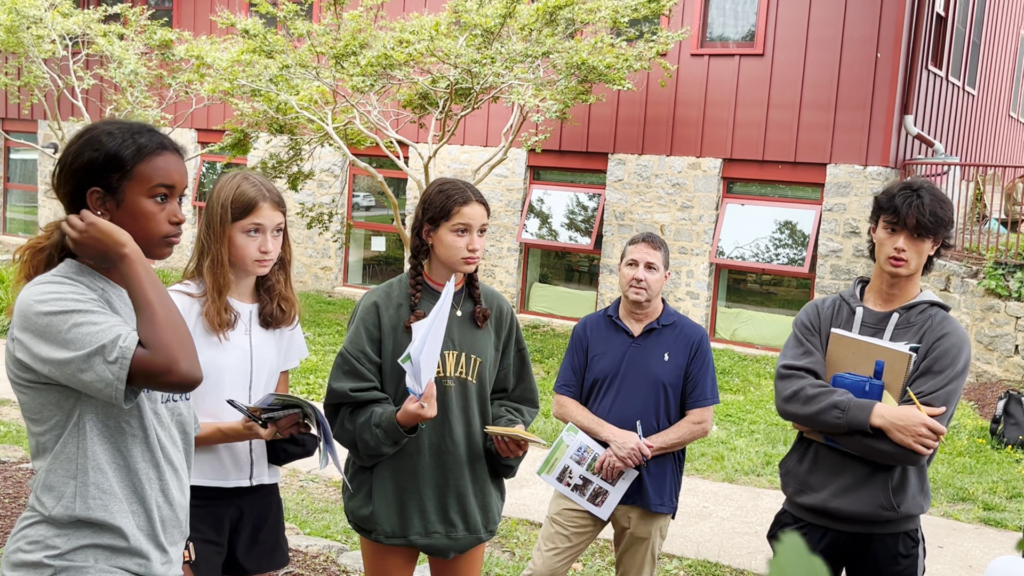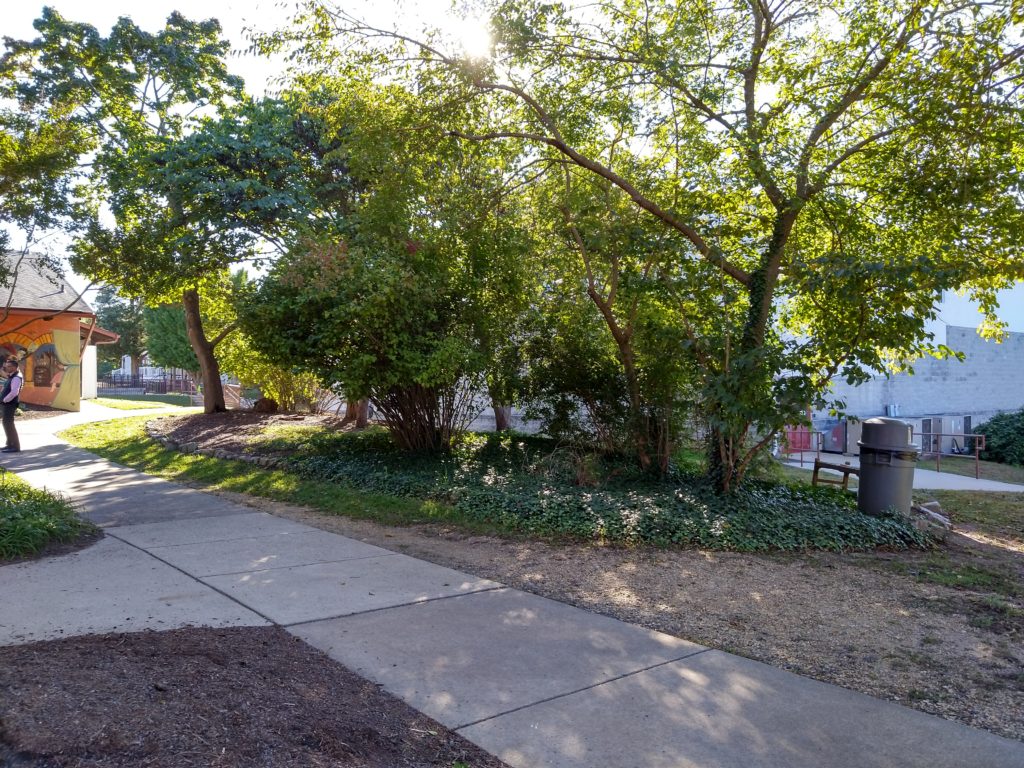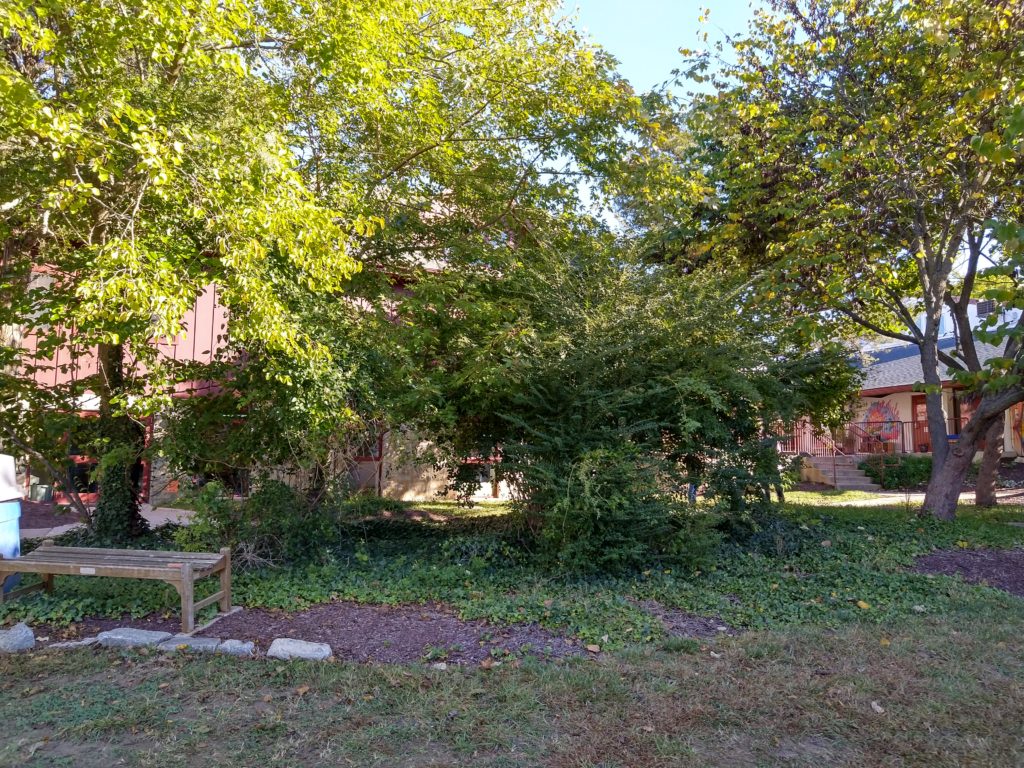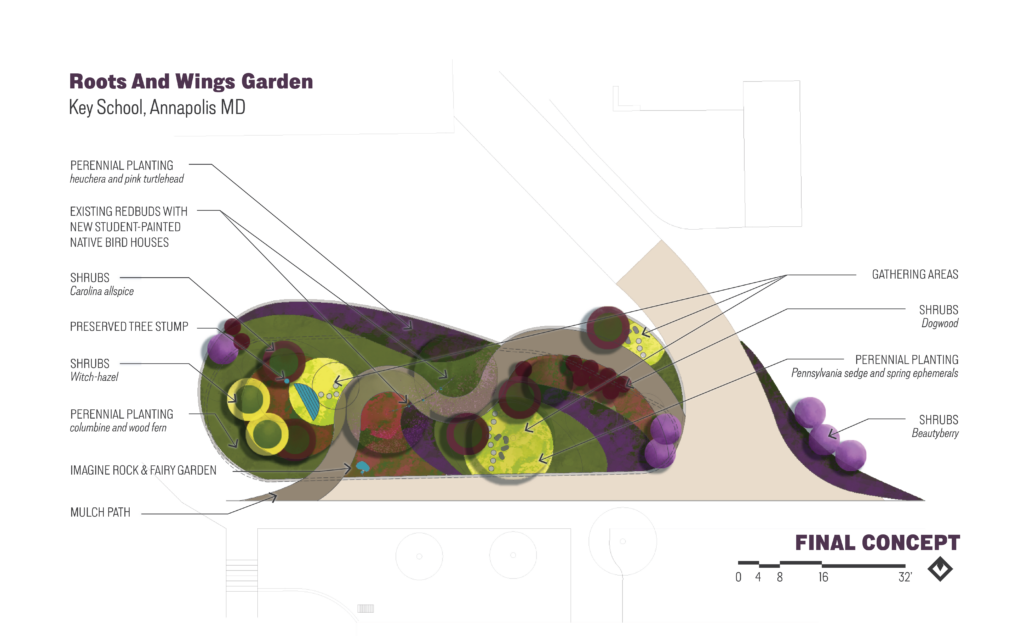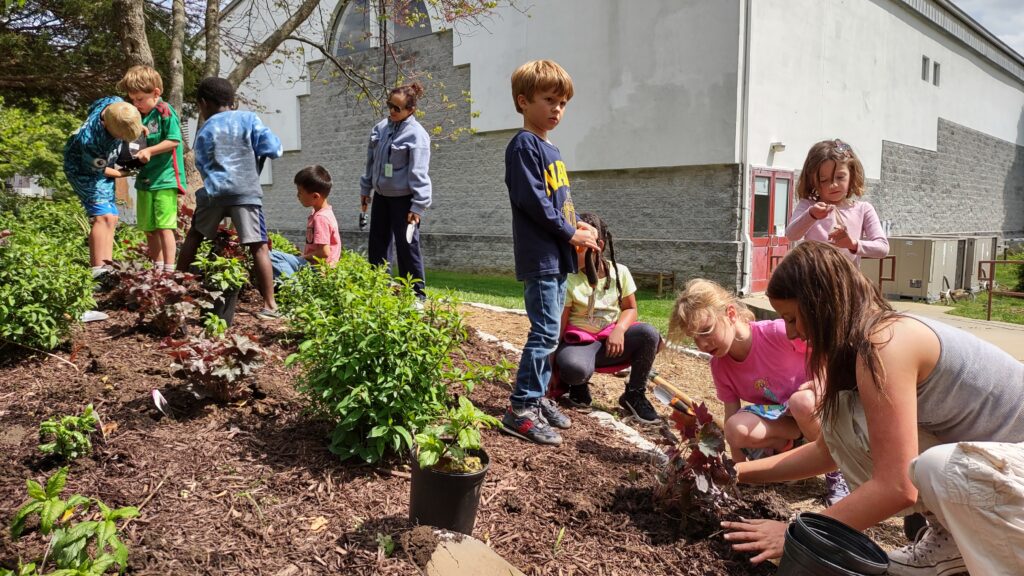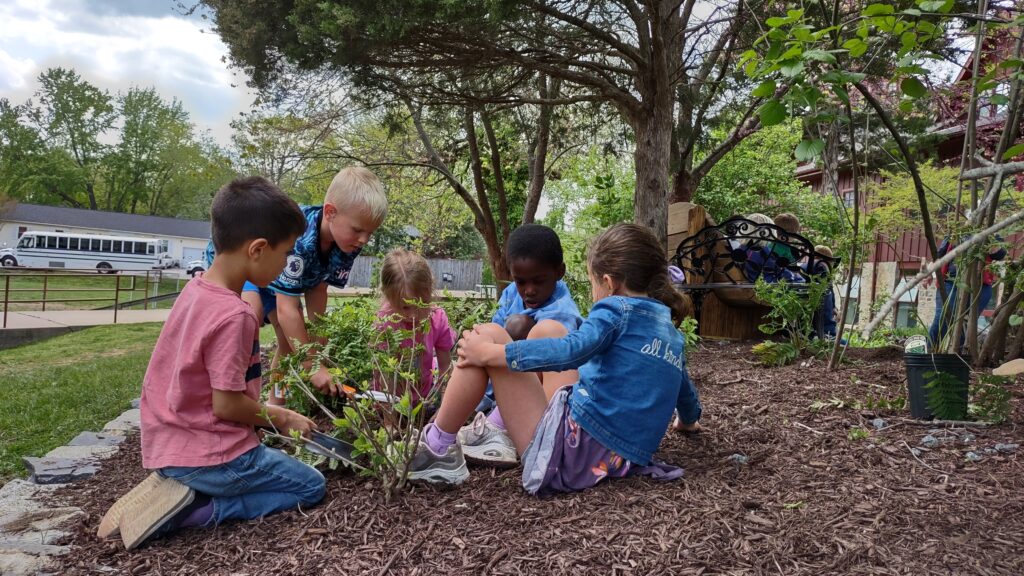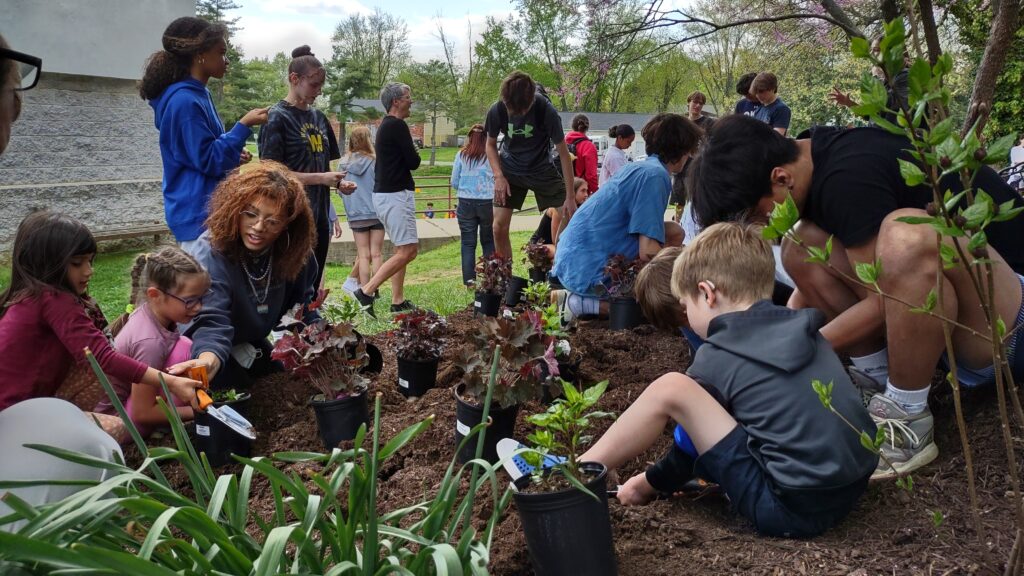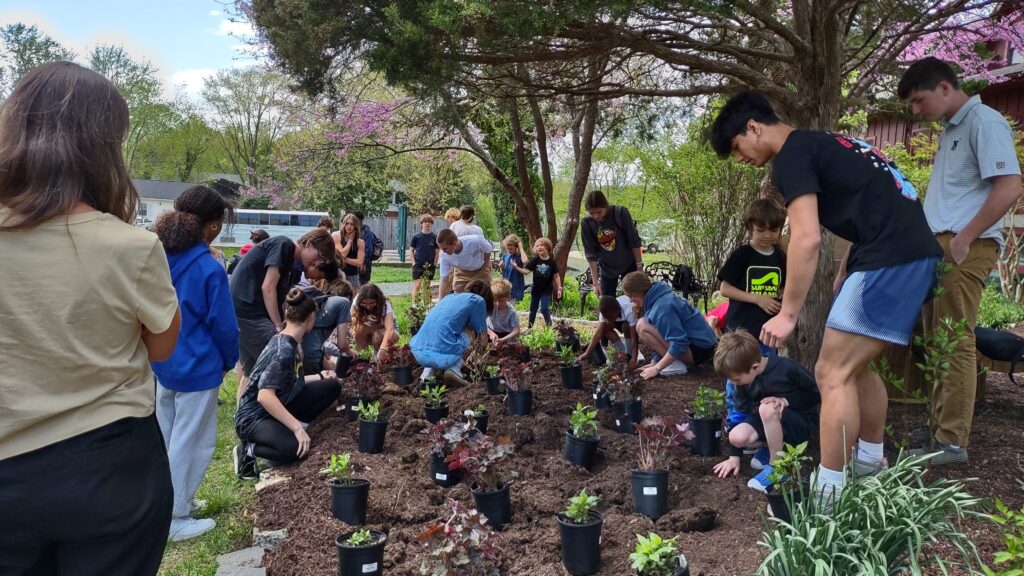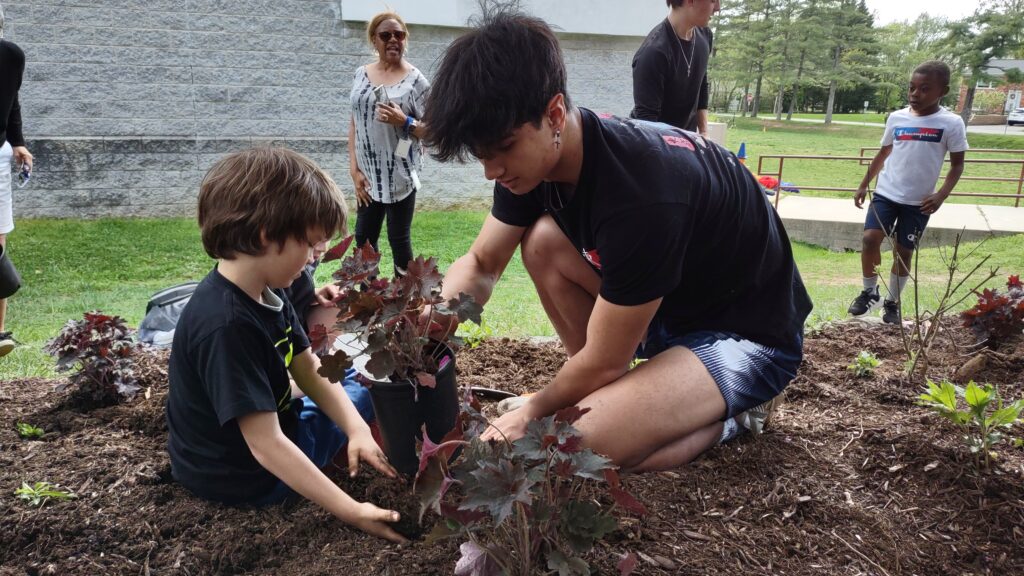About this Sacred Place
The Key School in Annapolis engages children from 2.5 years of age until 12th grade in an expansive educational curriculum. The school grounds were already home to a Sacred Place, but over the years the boundary of the Sacred Place shifted as the school’s built environment changed. Rediscovered in 2018 by a group of Key School students, the Nature Sacred bench and Sacred Place became the subject of a podcast. Now, a relocation and redesign of the Sacred Place is needed to accommodate the current needs of the school and its population. The new location for the Sacred Place, in a central location on the Key School’s campus, will be a place for students to seek respite during the day, in line with the school’s aim to help children mature emotionally, especially with nature as a guide during that process. The Sacred Place can also serve as an educational asset, teaching students to care for and interact with the natural environment around them.
In collaboration with stakeholder groups of Key students and faculty, a new Sacred Place was designed to engage students of all ages. Students identified having gathering spots for both individual and group use; and having enough gathering spaces that multiple groups could use the space at a time without feeling crowded as key needs for the design. They also highlighted using bright colors, hanging additional bird houses, having a curved pathway enabling two entry points to the site, and keeping the existing stump as key design elements.
All these elements and more are reflected directly in the design. Three seating nooks, one Nature Sacred bench and two boulder seating areas, were added. Each will be carpeted with sedge sprinkled with spring ephemerals for a burst of whimsy in the spring. Near the Nature Sacred bench is a tree stump, another feature the students connected strongly with. The site plan and planting patterns were inspired by academic subjects: existing sine curve-like shrub planting is mirrored and enhanced, and additional perennials added in elliptical shapes inspired by planetary orbits. Plants were chosen with an eye to activate the space with color, shape, and multisensory interest all year round. The palette emphasizes native and naturalized plants, pollinator (hummingbird, bee, and butterfly) attraction and native fauna habitat creation (with all plants filling an ecological niche), and sets up the space to be used for educational and stewardship activities. This was done while remaining sensitive to the plants that were already there. The pathway, with the offshoot, takes on the curvature of a river and its tributaries.
The site’s proximity to the First School also meant that we wanted to provide the younger students with a reason to be captivated by the garden, so an element of whimsy was introduced. The kindergarten classes participated in creating fairy houses to place onsite, an installation that can grow and shift and offers the opportunity for anyone of any age to engage with the space in this interactive way. The students listened to Tracy Kane’s story Fairy Houses, then followed the rules of the forest to build their houses in this garden.
Design Team:
Neha Srinivasan, Nature Sacred Sacred Place Project Manager, landscape designer
Vernon Hustead, Nature Sacred Design Advisor, Hustead LA

